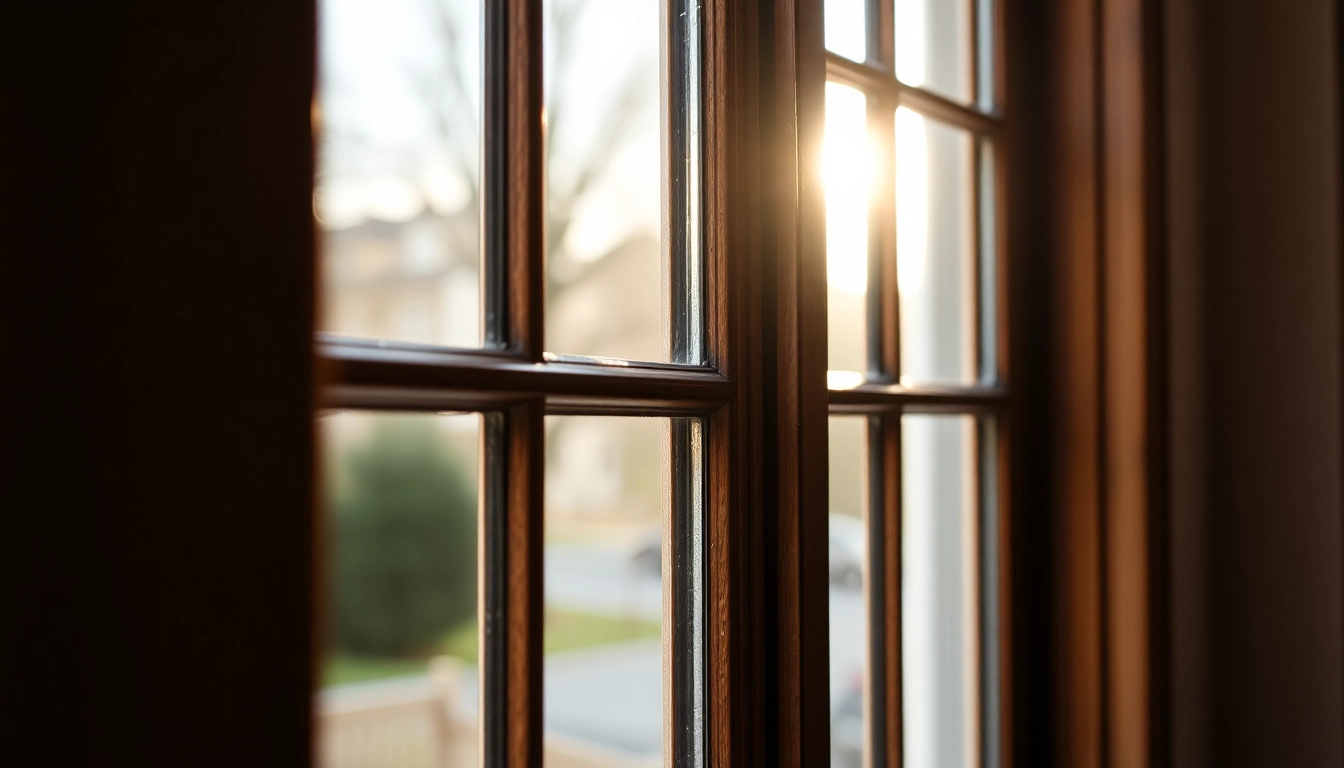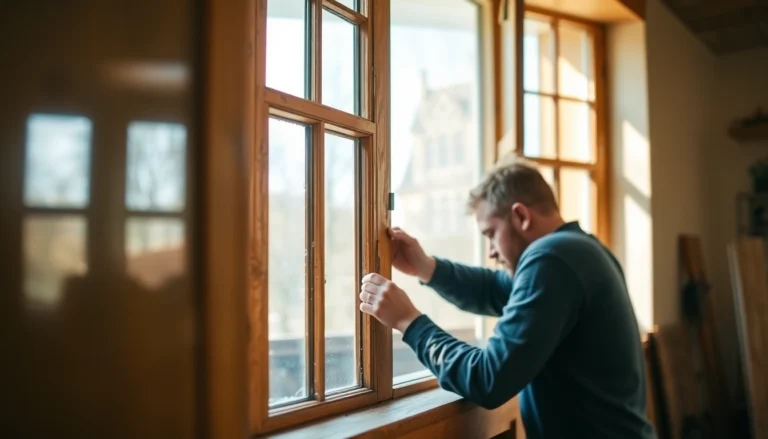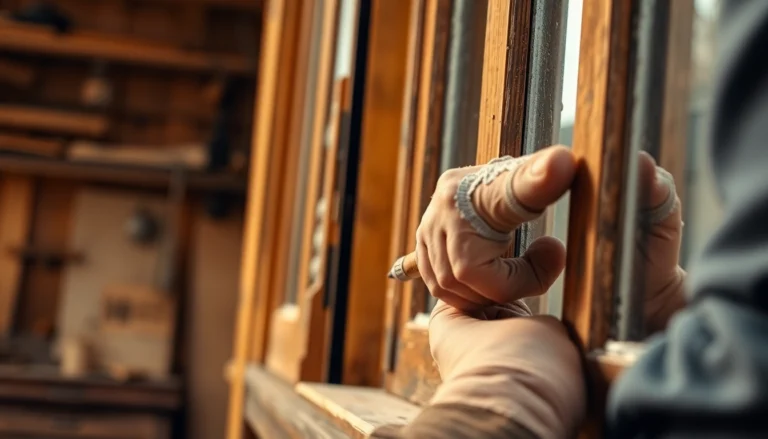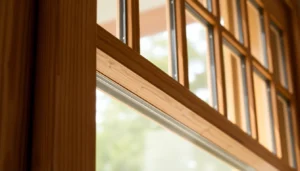Understanding Sash Window Refurbishment: Benefits and Key Considerations
1.1 What Is Sash Window Refurbishment?
At its core, sash window refurbishment encompasses a comprehensive process designed to restore and enhance the functionality, aesthetics, and energy efficiency of traditional sash windows. Unlike complete replacement, refurbishment aims to preserve the original character and craftsmanship of the windows while integrating modern enhancements for durability and performance. This involves a careful assessment of the existing structure, repairing or replacing damaged components such as sashes, frames, and cords, re-glazing with high-quality materials, and finishing with protective paint or varnish. The process embraces restoration techniques that respect the architectural integrity of historic buildings, making it an ideal solution for heritage properties or homeowners seeking to maintain period features.
Refurbishment varies in scope—from minor repairs and draught-proofing to full-scale restoration—including sash cord replacement, timber repairs, hardware upgrades, and aesthetic improvements. The goal is not just aesthetic renewal but also to improve functionality, security, and energy performance, often extending the lifespan of original windows by decades.
1.2 Advantages of Restoring Over Replacing
Choosing to restore rather than replace sash windows offers numerous benefits that go beyond mere preservation. These advantages include:
- Historical Preservation: Restoring original sash windows retains the architectural authenticity of your home, which is especially vital in conservation areas or listed buildings.
- Cost-Effectiveness: While initial costs may vary, refurbishment generally incurs lower expenses compared to installing entirely new bespoke timber sash windows, particularly when factoring in extensive labor and materials for replacements.
- Environmental Benefits: Restoration minimizes waste by reutilizing existing materials, reducing carbon footprint, and promoting sustainability—particularly when traditional timber is carefully repaired and maintained.
- Enhanced Energy Efficiency: With modern draught-proofing techniques and optional double glazing retrofits, restored sash windows can match or surpass new energy-efficient standards, helping to reduce heating bills and carbon emissions.
- Increased Property Value: Well-maintained period windows contribute to the charm and character of a property, often elevating its market appeal and value.
Consider, for instance, a Victorian terraced home where restoring original sash windows preserves its historic façade while providing modern comfort, offering a blend of aesthetic authenticity and functional improvement. These combined benefits make restoration an attractive, sustainable choice.
1.3 Common Challenges and How to Address Them
While sash window refurbishment is highly beneficial, it does come with its challenges which, if managed correctly, can be effectively overcome. Common issues include:
- Decayed Timber: Extensive wood rot can threaten structural integrity. Addressed by skilled carpentry involving removal of damaged timber, splicing in new wood, and applying resin-based repairs or consolidants.
- Broken or Worn Hardware: Deteriorated pulleys, weights, or sash cords can hinder operation. Replacement with period-appropriate hardware ensures authenticity and smooth operation.
- Failing Glazing and Securing Drafts: Old glass may be fragile or inefficient. Re-glazing with high-performance double glazing or secondary glazing provides better insulation and security.
- Paint and Finish Deterioration: Peeling paint or varnish affects protection and appearance. Proper stripping, priming, and refinishing enhance durability.
Proactively addressing these challenges through professional assessment and targeted repairs ensures longevity, maintaining the delicate balance between authenticity and modern standards.
Step-by-Step Guide to Sash Window Restoration
2.1 Assessing and Preparing Your Windows
The first crucial step involves a detailed assessment to determine the scope of work required. Consider factors such as timber condition, hardware functionality, glazing integrity, and overall alignment. This evaluation guides the planning process, ensuring all issues—from minor repairs to full restoration—are appropriately addressed.
Preparation also involves clearing the surrounding area, removing obstructions, and gently removing sashes from the window frame. It’s essential to document existing configurations and mechanisms for accurate reinstallation later, and to identify any structural issues that may require specialist intervention.
2.2 Removing and Repairing Sashes and Frames
This phase involves carefully disassembling the sashes. Old sash cords and weights are removed, and damaged timber is cut out for repair. Skilled carpenters splice in new timber, ensuring compatibility with existing materials. Joints are cleaned, and any rot is treated with preservative solutions before new pieces are integrated with adhesives and resin-based consolidants.
Hardware such as pulleys, locks, and handles are inspected, repaired, or replaced with period-appropriate fittings. Glazing beads are removed cautiously to prevent glass breakage, and any damaged glass is replaced, often using double-glazed units for improved insulation.
Properly restoring the counterweights and sash cords ensures smooth operation and longevity of the window’s movement capabilities.
2.3 Re-glazing, Painting, and Finishing Touches
Once structural repairs are complete, attention shifts to glazing and finishing. Modern high-performance sealing compounds and draught-proofing materials are applied to improve thermal efficiency. Double glazing retrofitting can significantly enhance insulation, reducing energy bills and noise pollution.
The glazing process involves carefully sealing and securing the glass with new putty or modern glazing compounds that are flexible and long-lasting. After glazing, the sashes are sanded to achieve a smooth surface, primed with durable paints, and finished with color-matched, weather-resistant coatings.
Final touches include fitting new hardware, ensuring smooth operation, and sealing the window frame meticulously to prevent drafts and water ingress. A comprehensive final inspection guarantees the window meets aesthetic, functional, and safety standards.
Cost Factors and Budgeting for Sash Window Refurbishment
3.1 Typical Costs Based on Window Size and Scope
Understanding the financial commitment associated with sash window refurbishment is key to effective budgeting. According to recent industry data, the average cost to fully refurbish a sash window in the UK is approximately £770; however, costs can vary widely based on size, condition, and the extent of upgrades required.
- Basic Repairs and Draught-Proofing: Ranging from £200 to £600 per window, focusing on essential maintenance and sealing gaps.
- Full Restoration with Double Glazing: Typically between £700 and £1,700 per window, including timber repair, refurbishment, and modern glazing retrofits.
- Additional Features: Security enhancements and decorative finishes may add to the overall expenditure.
These estimates serve as a broad guide; contacting local specialists can provide tailored quotes based on specific requirements. Also, broader scope projects, such as multiple windows or entire properties, often benefit from volume discounts or package deals.
3.2 Comparing Refurbishment vs. Replacement Expenses
When considering total expenditure, it’s vital to compare refurbishment costs with full replacement options. Replacing sash windows can cost upwards of £2,000 per window, especially if custom timber frames or high-performance glazing are involved. Conversely, refurbishment tends to be more economical, with many homeowners achieving significant upgrades for less than half the price of new installations.
Furthermore, skilled refurbishment preserves the unique architectural profile of period homes, which is often lost with modern replacements. The choice hinges on desired aesthetics, budget constraints, and the condition of existing frames.
3.3 Tips to Maximize Value and Longevity
Maximizing the lifespan and performance of your refurbished sash windows involves strategic choices:
- Use High-Quality Materials: Opt for durable timber, weather-resistant paints, and modern glazing options that ensure longevity.
- Employ Skilled Craftsmen: Expertise in traditional restoration techniques guarantees authentic work that withstands the elements.
- Implement Modern Technologies: Draught-proofing, secondary glazing, and security upgrades enhance performance without compromising aesthetics.
- Regular Maintenance: Schedule periodic inspections, repainting, and minor repairs to prevent deterioration.
For example, retrofitting double-glazed units with a U-Value around 0.7 W ensures energy efficiency comparable to modern windows while maintaining the historical look.
Enhancing Energy Efficiency and Security in Sash Windows
4.1 Modern Draught-Proofing Techniques
One of the most cost-effective ways to improve sash window performance is through effective draught-proofing. Modern systems involve installing weather seals or brush strips in the sash tracks and around the Meeting Rail to prevent cold air ingress. These measures can reduce heat loss by up to 30%, significantly lowering heating expenses.
Specialist draught-proofing accessories, designed to blend seamlessly with the window’s character, can be fitted internally or externally. Proper installation ensures minimal impact on window operation while maximizing insulation benefits.
4.2 Double Glazing Retrofits for Better Insulation
Retrofitting double glazing into existing sash frames offers substantial improvements in thermal performance. Advances in slimline double-glazed units allow for minimal reduction in sash size, preserving aesthetics while boosting U-values to as low as 0.7 W. This retrofit can deliver a payback period of just a few years through reduced energy bills.
Professional installation ensures airtight seals and proper operation, avoiding common issues such as difficulty opening or condensation build-up. The integration of secondary glazing options also provides an alternative where full double glazing isn’t feasible.
4.3 Security Features and Upgrades
Security is a vital consideration in any refurbishment. Upgrading locking mechanisms, adding window restrictors, and installing laminated security glass significantly enhance safety. These measures protect against intruders while maintaining the window’s visual authenticity.
Using Tudor-style hardware or period-appropriate sash locks maintains aesthetic consistency. Modern multi-point locking systems can be discreetly fitted, providing peace of mind without compromising design integrity.
Choosing the Right Sash Window Refurbishment Service
5.1 Essential Qualities of a Reputable Contractor
Selecting a skilled and reputable contractor is crucial for achieving high-quality results. Key qualities to look for include:
- Experience and Expertise: Proven track record in sash window restoration with portfolio evidence.
- Accreditations and Certifications: Membership in professional bodies (such as PAS 24, FENSA, or the Guild of Master Craftsmen).
- Customer Testimonials: Positive reviews and references from previous clients.
- Transparency and Detailed Quotes: Clear pricing with no hidden costs, and comprehensive scope of work outlined.
5.2 Questions to Ask Before Hiring
To ensure you make an informed decision, ask potential contractors about:
- Their experience with listed or heritage buildings.
- The techniques and materials they use for restoration.
- Estimated project timelines and costs.
- Guarantees or warranties offered on workmanship and materials.
Engaging in transparent conversations helps align expectations and secure long-term satisfaction.
5.3 Maintaining and Caring for Restored Sash Windows
Proper maintenance extends the life of your investment. Regularly inspect for signs of wear, paint deterioration, or hardware issues. Repainting every 5-7 years, lubricating moving parts annually, and promptly repairing minor damages prevent costly future restorations.
Keep the window tracks clean and ensure drainage holes are unblocked to prevent dampness and rot. Maintaining a consistent care routine preserves the beauty, functionality, and security of your sash windows for generations.








